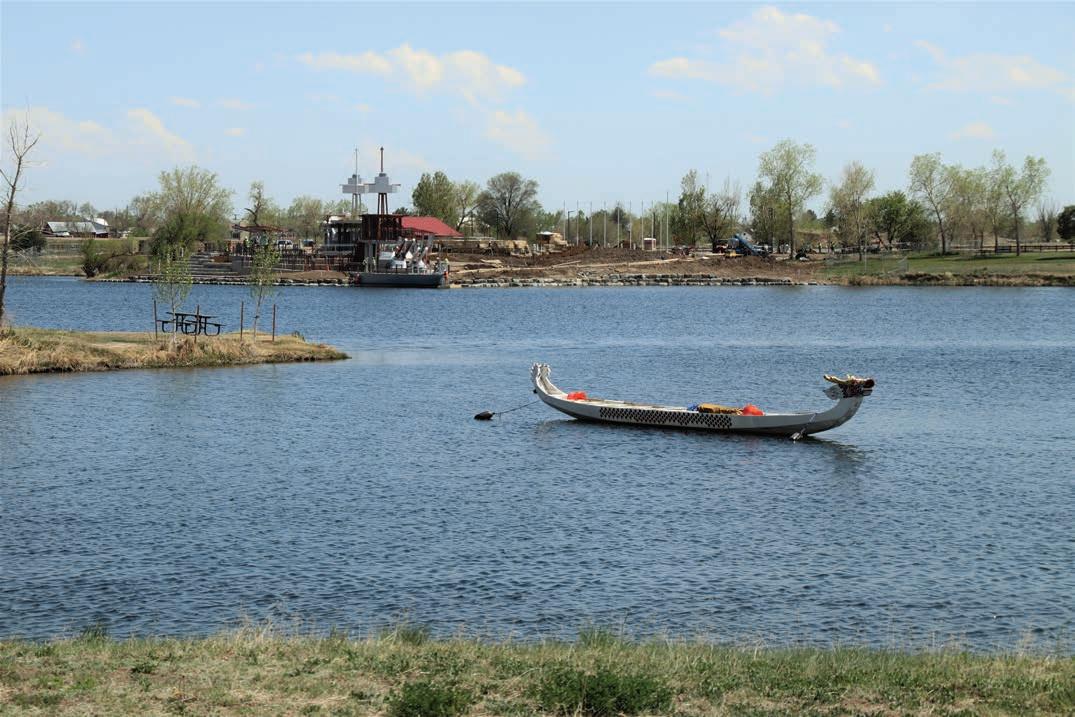
2 minute read
FREEDOM. TO BE YOU.
Call 1-844-823-0293 for a free consultation.
2029 and 25.9% starting in 2031.
• For agricultural properties and properties used for renewable energy, the assessment rate would be reduced to 26.4% from 29% through the 2032 tax year. For properties that fall under both classi cations, such as those used for agrivoltaics, the rate would be cut to 21.9%.
Property taxes in Colorado are calculated by multiplying the statewide assessment rate by the value of a property — sometimes referred to as a market value — as determined by a county assessor. at number is then multiplied by the local mill levy rate.
(A mill is a $1 payment on every $1,000 of assessed value. So in order to gure out what your tax bill is you should multiply your mill levy rate by 0.001 and then multiply that number by the product of multiplying your property’s value by the statewide assessment rate. at’s how much you owe.)

So, someone who owns a home valued at $600,000 and assessed at a 6.765% statewide residential assessment rate in a place where the mill levy rate is 75 would owe $3,044.25 in taxes each year. e formula to get to that number looks like this: $600,000 x 0.06765 x (75 x 0.001) = $3,044.25.
e proposal would also prevent many local taxing districts from collecting an increase in property taxes above the rate of in ation, though school districts would be exempt and local governments could override the cap after giving notice to property owners. e change would reduce the amount of money available for refunds in years in which the cap is exceeded.

Utah has a similar system, and that’s what the provision in the Colorado proposal is modeled after.
To account for the cuts, the legislature is planning to spend $200 million to repay local governments, including schools, for the revenue they would have collected. Additionally, the plan calls for using about $250 million of the $2.7 billion Colorado is projected to collect in the current scal year, which ends June 30, above Taxpayer’s Bill or Rights cap on government growth and spending, to further account for local districts’ revenue reduction.
Additionally, voters would be asked in November to increase the TABOR cap, which is calculated by annual growth in population and in ation, by an extra 1%. (Any money collected over the cap has to be refunded.)
Finally, Proposition HH would set aside about $20 million each year to go toward a state renter relief program — a late addition to the measure aimed at acknowledging the proposal mostly bene ts property owners.
Proposition HH was placed on the ballot through the passage of Senate Bill 303, which was introduced a week ago. It passed the House on Monday by a 39-7 vote with 19 absent.
All 19 Republicans in the chamber were marked absent after they walked out of the chamber in protest as the vote was being taken and after Democrats shut down debate on the measure. Republicans are in a super minority in the House, so Democrats still had a quorum in their absence.
“Our citizens are really smart,” said Rep. Lisa Frizell, R-Castle Rock. “ ey understand that this proposal, this bill is a grand e ort to get rid of TABOR and their TABOR refunds.”
Rep. Mike Weissman, an Aurora Democrat and a lead sponsor of Senate Bill 303, said Colorado voters would ultimately decide whether they like the proposal.
“We don’t make the nal call,” he said. “ e voters do.”
When the bill moved to the Senate for nal approval, Sen. Barbara Kirkmeyer, R-Brighton, libustered the measure for an hour before the Democratic majority cut her o at about 9:15 p.m. by voting to limit debate. e measure passed on a 23-12, party-line vote and now awaits the
SEE RELIEF, P11











